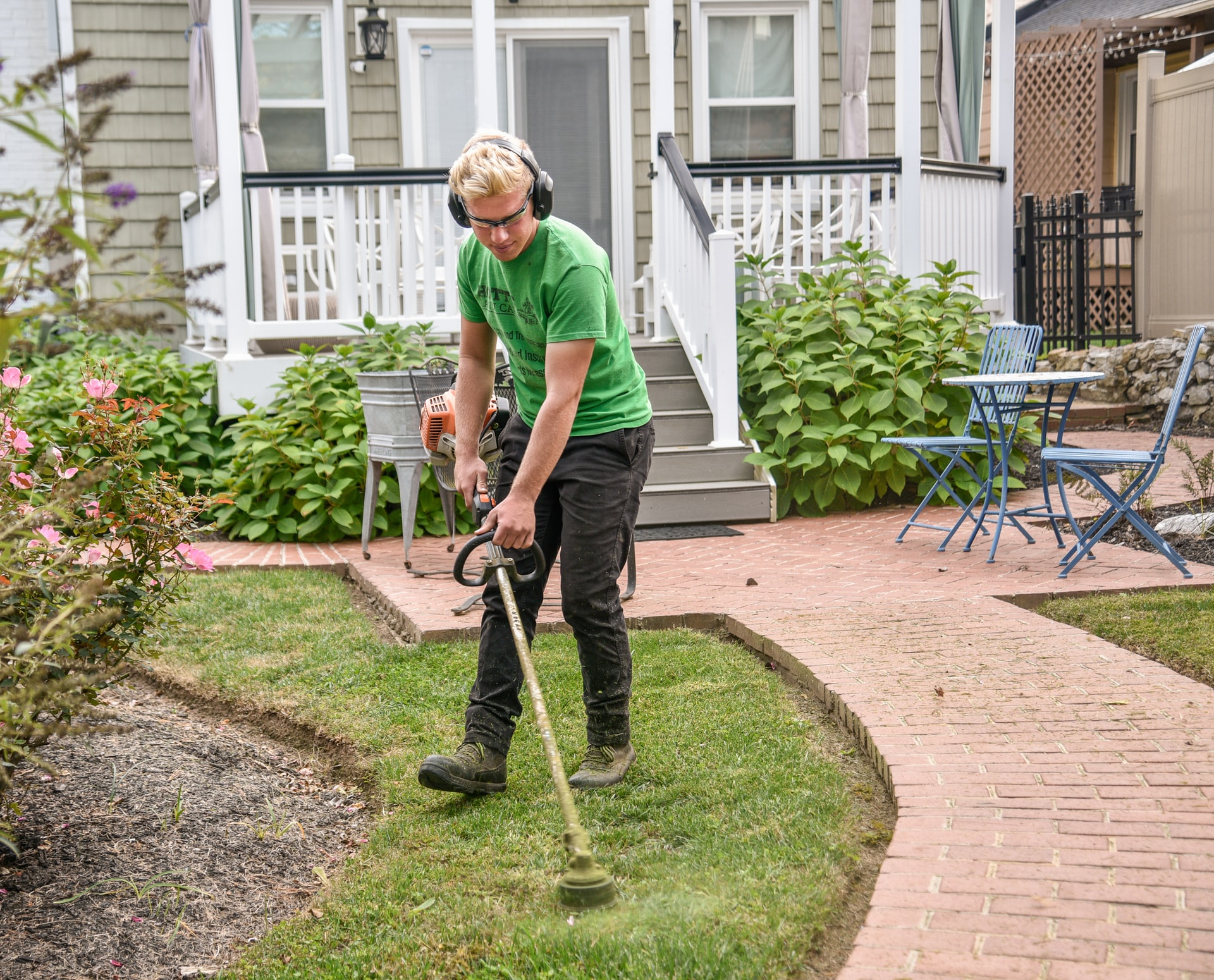Watering and mowing are the foundation of a healthy lawn. Not sprinkling adequate water and not opting for a professional mowing service can lead to a range of different lawn problems. On the flip side, if you water too much, that can also have dreadful effects on your lawn.
Clearly, lawn maintenance can be a complex task. But if you get the job done right you’ll have a lush garden in no time. So, here are the top 7 tips to water your lawn properly so that it performs at its best.
- Employ smart irrigation systemsAn irrigation system is significant to your lawn because it keeps it hydrated on a consistent schedule. Also, you’re not required to constantly keep track of when you last watered your lawn. You should use smart irrigation systems instead of traditional ones as it offers a variety of advantages for you and your lawn.Smart irrigation systems can improve water levels, which is dependent on factors like soil moisture and weather forecast. Wireless moisture sensors can do this work for you. Furthermore, avoid using a hose for watering; instead, employ sprinklers and soaker hoses for the consistent spreading of water to your lawn.
- Water for longer, less frequentlyIt is vital to know how much water your lawn needs. It’s wise to water for longer periods and less frequently. You need to teach your lawn to be patient during a drought and get used to surviving without constant watering. To do this, sprinkle water 2-3 times a week for an hour, rather than watering it 6 times a week for 15-20 minutes. The latter can make your lawn less drought tolerant and needier.
- Different lawns require a different amount of waterThe general rule of thumb is to water your lawns with 1-1.5 inches of water per week. But there are a few factors that can impact this general rule. One of those is that different lawns need different amounts of water. Therefore, when choosing a new lawn, make sure you know what you're in for.For instance,-The healthy and tall fescue lawn generally has a deep root system and is the most drought tolerable option. They generally require less amounts of water and are suitable for dry climates.-Kentucky bluegrass has a habit of struggling during dry periods and then revitalising in the wet season. This means they need extra attention during summer when compared to other types of lawns.-Winter grasses like Bermuda grass and Centipede grass thrive in warm conditions. It develops a deep root system, which makes them more tolerable of hot, dry climates. They require 20% less water than cool-season grass types.You can gain more information about your lawn type from the companies that provide garden services.
- Keep an eye on weather changesDiffering weather conditions will call for a change in the normal watering routine of your lawn. If you live in a cold region and there is suddenly hot weather for several in a row, then you may need to add some extra watering into your routine. Similarly, if there’s wet weather for a few days, then reduce the amount of water for your lawn during that period.
- Water at the right timeWhen it comes to watering, timing is another key factor for a lush and healthy lawn. If you sprinkle water at the wrong time, then it can cause a build up moisture due to evaporation. The best time to water your lawn is in the morning and evening. Sprinkle water as early as you can, if possible. Try not perform this task when it’s too hot outside unless you have a fescue lawn. Watering at night can also cause fungal problems to your lawn, so avoid this too.
- Fertilise your lawnFeeding your lawn with the right fertiliser is the best way to make your lawn healthy and green. You’ll also be able to witness massive improvement in its growth and colour.There are two types of fertiliser: granule and liquid. The former one includes Power Feed Lawn Feed, which is organic and is composed to provide nutrients, trace elements and growth in balance to your lawn. The latter type includes Seasol lawn ready-to-use fertilizer, which will feed and revitalise your lawn while conditioning the soil.
- Aerate and allow the soil to breatheLawns can get dense from regular watering and fertilisation over time. You need to give them some air and allow your soil to breathe, and this will enhance nutrient absorption. All you need to do is drop the tip of an aerator into the soil approximately 5 cm deep and work over the entire lawn. You can even employ aerator sandals and take a walk on your lawn in rows that are about 15 to 20 cm apart.
So, these are our top tips for watering your lawn to achieve your lawn goals – thicker, lusher, healthier and more beautiful. Furthermore, you can hire professionals for lawn mowing; they will mow your grass that will result in thicker growth, providing a lush lawn that’s softer underfoot.









 Erika Rhein, the contributing author and the professional blogger by profession. With years of experience, I now focus on writing blogs on varied niches. Being a research enthusiast, I like to provide my readers with the useful and informative articles on the different topics they are looking for. I aim to create a difference through my writing.
Erika Rhein, the contributing author and the professional blogger by profession. With years of experience, I now focus on writing blogs on varied niches. Being a research enthusiast, I like to provide my readers with the useful and informative articles on the different topics they are looking for. I aim to create a difference through my writing.
0 Comments